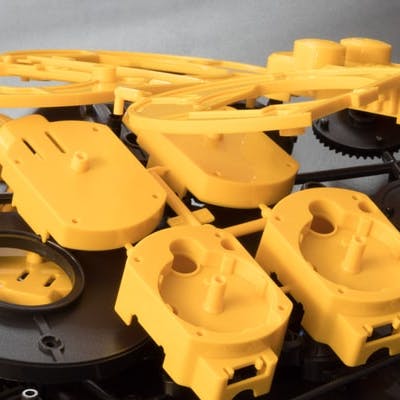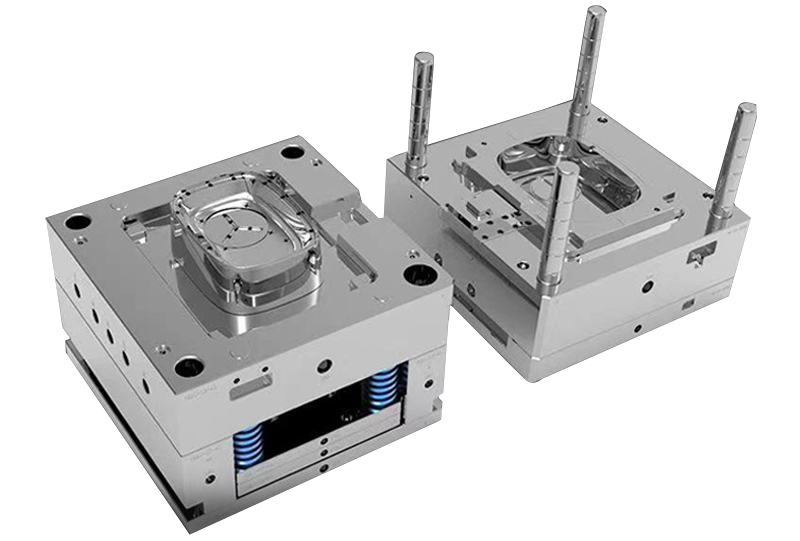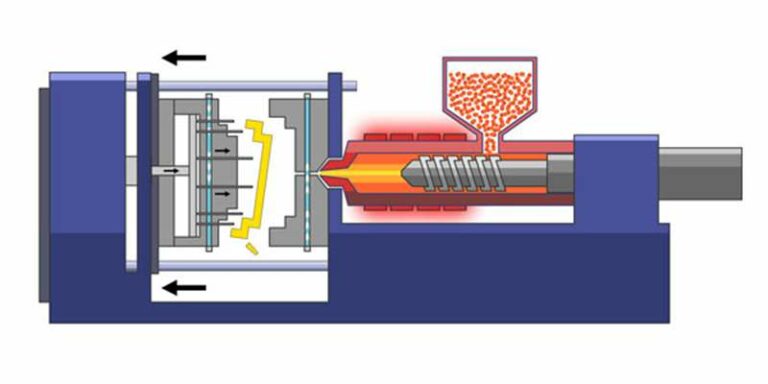Understanding the Fundamentals of Plastic Shot Molding Procedures
Plastic injection molding serves as a keystone of modern-day manufacturing, offering a systematic method to creating complicated parts with accuracy. This procedure not only incorporates the fundamental steps of melting and infusing products into mold and mildews however also includes a nuanced understanding of different influencing aspects, such as temperature level and pressure. As markets progressively require effectiveness and top quality, the intricacies of this method come to be extra critical. Checking out these vital components can reveal how even small changes can result in significant improvements in production results, questioning regarding the possibility for technology in this well established procedure.
What Is Plastic Shot Molding?
Plastic injection molding is a commonly used production process that changes thermosetting and polycarbonate materials into precise and complicated shapes. This strategy is preferred for its capacity to generate high volumes of the same parts with extraordinary accuracy, making it an important technique in different sectors, consisting of automobile, customer products, and medical devices.
The process entails thawing the picked plastic product and injecting it right into a mold and mildew under high stress. The mold and mildew, created to the specs of the wanted component, allows the liquified plastic to form as it strengthens and cools. Once the product has actually solidified, the mold and mildew is opened up, and the ended up part is ejected.
Plastic shot molding provides several advantages, including lowered waste, uniformity in production, and the capacity to include complex layouts that might be challenging with other making methods. Additionally, it supports a broad variety of products, each giving unique homes that can be customized for specific applications. As sectors proceed to innovate, plastic injection molding remains at the center, making it possible for the growth of innovative products that fulfill advancing consumer demands.
The Shot Molding Refine
The injection molding process is a sophisticated method that includes numerous essential stages to produce premium plastic elements. Initially, plastic pellets are fed right into a warmed barrel where they are thawed into a thick liquid. This molten plastic is then injected under high pressure into a precision-engineered mold and mildew, which forms the material right into the preferred type.
Once the mold and mildew is filled up, the plastic is permitted to cool and strengthen, taking the form of the mold dental caries. Air conditioning time is important, as it influences the cycle time and the final residential properties of the shaped part. After sufficient air conditioning, the mold opens, and the completed part is expelled making use of ejector pins.

Materials Made Use Of in Shot Molding
Various products can be made use of in the shot molding procedure, each offering special buildings that cater to details applications. One of the most frequently made use of products consist of thermoplastics, thermosetting plastics, and elastomers.

Thermosetting plastics, like epoxy and phenolic resins, undergo a chemical change during the treating procedure, causing an inflexible, inflexible structure. These materials are perfect for applications needing high warmth resistance and architectural honesty, usually utilized in vehicle components and electrical insulators.
Elastomers, including silicone and rubber-based materials, give versatility and durability. Their distinct buildings make them appropriate for applications that demand flexibility, such as gaskets and seals.
In addition, specialized materials like bio-based plastics and compounds are obtaining traction for their ecological advantages and boosted performance qualities, widening the range of shot molding applications in numerous industries. Comprehending the properties of these materials is important for choosing the suitable kind for specific projects.
Advantages of Injection Molding
Injection molding attracts attention as a very efficient production procedure that uses countless advantages for producing complicated get rid of accuracy. One of one of the most considerable advantages is the capacity to create elaborate designs that would certainly be challenging or impossible to accomplish with other approaches (Plastic Injection Molding). The process permits for tight resistances and detailed functions, guaranteeing high-quality parts
Furthermore, injection molding is recognized for its fast manufacturing abilities, making it an optimal selection for high-volume production. When the mold and mildew is produced, parts can be generated swiftly, reducing preparations and enhancing general efficiency. This efficiency not only lowers manufacturing prices but likewise provides an one-upmanship in the marketplace.
The adaptability of products made use of in injection molding better improves its allure. home A variety of thermoplastics and thermosetting polymers can be used, permitting makers to select materials that best fulfill their particular demands, including adaptability, strength, and warm resistance.
Additionally, the process decreases waste, as excess product can usually be reused and recycled. This sustainability facet adds to a lowered environmental impact, making shot molding a liable manufacturing selection. Overall, the advantages of injection molding make it a favored technique for many sectors.
Variables Impacting Item Top Quality
While countless variables can affect product quality in shot molding, comprehending these aspects is important for accomplishing ideal results. Trick aspects consist of product choice, refining specifications, and mold layout.
Product selection plays an important role, as various polymers show one-of-a-kind residential properties that impact flowability, strength, and thermal security. Poor material option can cause defects such as bending or incomplete dental filling.
Processing criteria, including pressure, cycle, and temperature time, should be diligently regulated. Variants in these setups can lead to disparities partially measurements and surface area finish. For circumstances, excessively high temperature levels might trigger degradation of the polymer, while poor stress can lead to short shots.
Mold and mildew layout is just as crucial, as Read More Here it establishes the circulation of the molten plastic and the cooling process. Improperly developed molds might cause unequal cooling rates, helpful site causing dimensional mistakes and recurring tensions.

Final Thought
To conclude, plastic injection molding offers as a critical production procedure that enables the reliable production of top quality components. Mastery of the shot molding process, consisting of the understanding of products and the influence of different aspects on product top quality, is necessary for accomplishing optimal results. The benefits of this method, such as cost-effectiveness and style flexibility, further emphasize its significance throughout numerous markets, strengthening its standing as a preferred selection for high-volume manufacturing.
Plastic injection molding offers as a foundation of contemporary manufacturing, supplying a systematic method to generating complex parts with accuracy.Plastic shot molding offers numerous benefits, including minimized waste, consistency in production, and the capacity to include intricate layouts that may be challenging with various other producing approaches (Plastic Injection Molding). As markets proceed to innovate, plastic injection molding continues to be at the forefront, allowing the development of advanced products that satisfy evolving customer demands
The shot molding procedure is an innovative strategy that includes several key stages to generate high-quality plastic elements.In conclusion, plastic injection molding serves as a vital production process that enables the efficient production of premium elements.